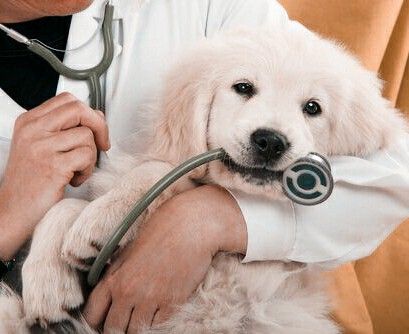Dog / Detail
Making Vet Visits a Breeze: Training Your Dog to Be a Good Patient
Jonathan Bennet | 28 August 2024 | 16:05
Many dogs become anxious or fearful when they are taken to the vet's office, and this can make the visit even more unpleasant.
However, with a little patience and training, you can help your dog learn to associate vet visits with positive experiences.

Before you can train your dog to be a good patient at the vet, it is important to understand why they may be anxious or fearful.
Some dogs may be afraid of unfamiliar people or environments, while others may associate vet visits with painful procedures. It is also important to remember that some dogs are simply more sensitive than others.

The most effective way to train your dog to be a good patient at the vet is through positive reinforcement. This means rewarding your dog for good behavior, rather than punishing them for bad behavior.
By associating vet visits with positive experiences, you can help your dog overcome their anxiety and learn to trust you and the vet.

It is best to start training your dog to be a good patient at the vet when they are young. This will help them become accustomed to the sights, sounds, and smells of the vet's office.
Even if your dog is older, it is still possible to train them. However, it may take more time and patience.

Make Vet Visits a Regular Part of Your Routine
One of the best ways to help your dog become comfortable with vet visits is to make them a regular part of your routine. This means taking your dog to the vet for routine check-ups, even if they are not sick.
By exposing your dog to the vet's office on a regular basis, they will become more familiar with the environment and less likely to be anxious.

You can also practice vet-like behaviors at home to help your dog become more comfortable. This includes handling your dog's paws, ears, and mouth, as well as taking their temperature.
You can also practice giving your dog medications and injections. By practicing these behaviors at home, your dog will be less likely to be afraid when the vet performs these procedures.

Create a Positive Association
It is important to create a positive association with vet visits. This means rewarding your dog for good behavior, even if they are not perfect.
For example, you can reward your dog for sitting calmly in the waiting room or for allowing the vet to examine them. You can also give your dog treats or praise them when they are at the vet's office.
Desensitization and Counterconditioning
If your dog is severely anxious or fearful, you may need to use desensitization and counterconditioning techniques. This involves gradually exposing your dog to the things that scare them while simultaneously creating a positive association.
For example, you could start by taking your dog to the vet's parking lot and rewarding them for good behavior. Then, you could gradually move closer to the vet's office.
Eventually, you should be able to take your dog inside the vet's office without them becoming anxious.

If your dog is still anxious despite your training efforts, you may want to consider using calming aids.
There are a variety of calming aids available, including pheromone diffusers, calming chews, and prescription medications. Talk to your vet to determine which calming aid is best for your dog.

There are a few things you can do to make the vet visit as stress-free as possible for your dog.
- First, try to schedule appointments for a time when your dog is least likely to be anxious.
- Second, bring along a familiar object, such as your dog's favorite toy or blanket.
- Third, avoid scolding or punishing your dog at the vet's office.
Finally, be patient and understanding. It may take some time for your dog to learn to trust the vet and the vet's office. With patience, consistency, and positive reinforcement, you can help your dog learn to associate vet visits with positive experiences.
By following these tips, you can make vet visits a breeze for both you and your furry friend.
Related
-

The Healing Power of Dogs: How Canine Therapy is Revolutionizing Mental Health and Boosting Positive Energy in Humans
Dog14 November 2024
-

A Pawsitive History: Dogs of Nuremberg
Dog09 November 2024
-

The Role of Oxytocin in the Human-Dog Bond: The Science Behind Our Deep Connection
Dog06 November 2024
-

Beyond the Beach: Jamaica's Dog Lovers
Dog29 October 2024
-

A Dog's Delights: Homemade Snacks for Our Furry Babies, Recipes Included!
Dog29 October 2024
-

A Dog's Disorientation: Understanding Your Dogs' Wanderlust
Dog29 October 2024
Popular
-

-

A Pawsitive History: Dogs of Nuremberg
09 November 2024 -

-

Beyond the Beach: Jamaica's Dog Lovers
29 October 2024 -
